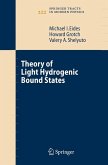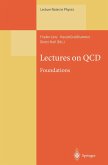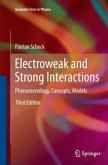Light one-electron atoms are a classical subject of quantum physics. The very discovery and further progress of quantum mechanics is intimately connected to the explanation of the main features of hydrogen energy levels. Each step in the development of quantum physics led to a better understanding of the bound state physics. The Bohr quantization rules of the old quantum theory were created in order to explain the existence of the stable discrete energy levels. The nonrelativistic quantum mechanics of Heisenberg and Schr¨ odinger provided a self-consistent scheme for description of bound states. The re- tivistic spin one half Dirac equation quantitatively described the main - perimental features of the hydrogen spectrum. Discovery of the Lamb shift [1], a subtle discrepancy between the predictions of the Dirac equation and the experimental data, triggered development of modern relativistic quantum electrodynamics, and subsequently the Standard Model of modern physics. Despite itslong and rich history the theory of atomic bound states is still very much alive today. New importance to the bound state physics was given by the development of quantum chromodynamics, the modern theory of strong interactions. It was realized that all hadrons, once thought to be the elementary building blocks of matter, are themselves atom-like bound states of elementary quarks bound by the color forces.








